
Two hours from Auckland, 30 minutes from Matamata and 20 minutes from Hamilton and Tirau, the tree-lined town of Cambridge is as picturesque as they come, with the ribbon of the Waikato River the finishing touch. Established during the land wars as a camp for the Waikato Regiment, it was named for the Duke of Cambridge, cousin of Queen Victoria. On the opposite side of the river, Leamington began to develop, and while the two were joined by a bridge in 1871, it wasn’t until the 1950s that the two became known as one entity.
Many of the almost 18,400 people that call Cambridge home commute to nearby Hamilton (24km east) while living in the more relaxed, rural setting of one of New Zealand’s prettiest towns (it’s true, Cambridge was a finalist in 2017 although the award ultimately went to Feilding). Though small, Cambridge is mighty, and many locals have made their name on the international stage of their chosen fields. Top cyclists train and compete at the Avantidrome, and many a horseman has found his match in these paddocks, with race-winning steeds bred in this area. The town pays homage to its equine legacy with a monument outside the town hall.
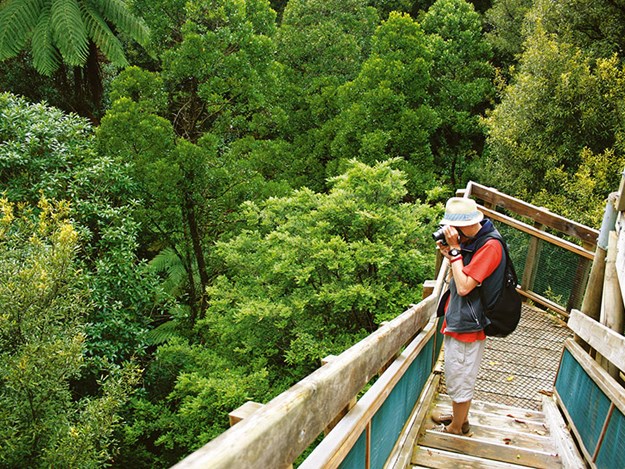 |
Sanctuary Mountain |
Sanctuary Mountain
Te Tui a Tane: the weaving together of all things Tane (Maori god of the forest). The name of the largest enclosure on Sanctuary Mountain is apt. Anyone who walks this land is serenaded by a chorus of tui, robin, kaka and hihi, all singing the praises of this land, this sanctuary. The 3400ha maunga, Maungatautari, is protected by the longest predator-proof fence in the world – 47km of fence so well designed that even the sneakiest, slyest rat is yet to slip over its curved top.
Sanctuary Mountain has been recognised as a reserve since 1912, and the community, iwi and landowners united to form the Maungatautari Ecological Trust in 2001, creating what would become an internationally renowned community project and charitable trust. The mountain is divided into three sections; the largest is Te Tui a Tane with a 16m viewing platform and visitor centre, then the northern enclosure with variety of bushwalks, and the Tautari wetlands – one of the only remaining areas of wetland in the Waikato, with 80% of original examples ruined for farming.
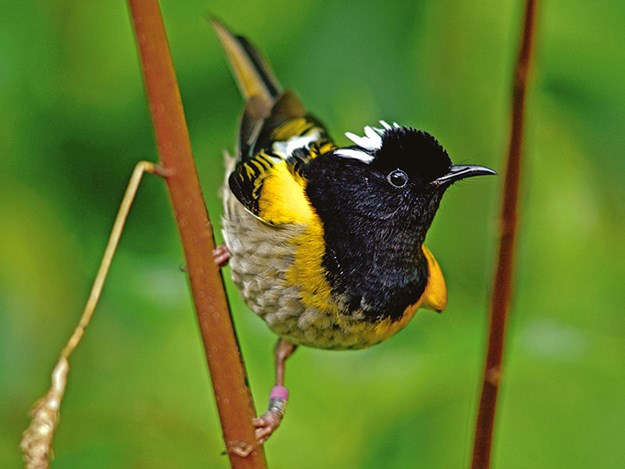 |
Sanctuary Mountain is home to the hihi (stitchbird) |
Stand still in the bush and see life flourish. Even when all seems quiet, the land hides secrets. Hollow burrows with softly snoring kiwi, kokako in the treetops, takake in the wetlands, giant weta in the dark depths, tuatara in the leaf litter. The best way to experience this place is with a guide, and Sanctuary Mountain offers a range of guided tours through the bush and wetlands, that last from between 50-90 minutes. For guests who prefer their own pace, it’s fine to explore without a guide for a small entry fee – all proceeds go straight back to the land. There is a small visitor centre with cold drinks, a small shop and toilets.
Sanctuary Mountain also run annual health checks on their kiwi population, and spaces are available to the public who wish to take part in the tracking and monitoring of the little icons. There is a wait list that can be joined via the website.
99 Tari Road, Pukeatua (30 minutes south of Cambridge). (07) 870 5180, sanctuarymountain.co.nz
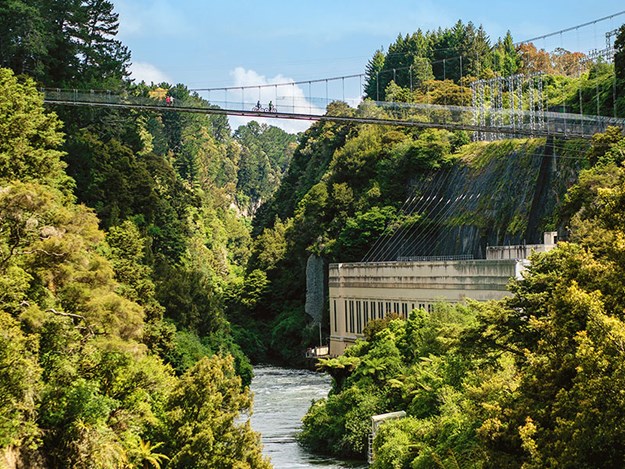 |
Waikato River |
Waikato River
The Waikato River isn’t the easiest to get to know. It’s aloof and prickly, with hidden depths and periods of stormy moodiness. Starting from small streams on the slopes of Mount Ruapehu, New Zealand’s longest river (425km) spills out of Lake Taupo, tumbles down the Huka Falls, widens and softens at Karapiro and meanders through Cambridge, before journeying north to the coastal estuary at Port Waikato. While often picturesque and inviting (especially during the scorching summer months), the Waikato is more practical than personal. Once an important transport route for Maori, the waters are still popular with boaties, especially the sheltered waters of Karapiro. There are nine hydro-electric power stations and eight dams, which generate approximately 13% of the nation's power; and its banks are becoming an increasingly important tourist attraction, especially for keen cyclists.
That being said, there are still lovely swimming holes and quiet river trails to be found – they may just be slightly off the beaten track. Here are a few to look for.
The Cambridge Heritage Walk covers both the Settlers Track and the Soldiers Track. Starting from Bath Street on the town side, the route follows the river down to Fergusson bridge, then back to up to the bridge on Victoria Street (scared of heights? Don’t look down). This walk passes many historic sights and has good views of the river and town.
For a heart-stopping view of the river, and an excellent view of a working power station, gather your wits and tip-toe on to the Arapuni suspension bridge. The 152m bridge was originally built in the 1920s to give workers access to the power station and is now part of the Waikato River Trail. Parking is off Arapuni Road, and the bridge is well signposted.
Waipuke Park on Lake Karapiro has safe swimming, a playground and picnic spots – it’s the perfect place to watch an afternoon drift away. There’s always some action to entertain on the lake as well – whether rowing, waterskiing or other water sports. Signposted from Maungatautari Road.
Some sections of the cycleways are suitable for walkers, including the Te Awa Trail. Walk from the Avantidrome to Cambridge town centre (3.2km, including a section along the river) and from Cambridge to Karapiro (8km). The walkway is wide and generally flat, but do watch for cyclists, and vice versa.
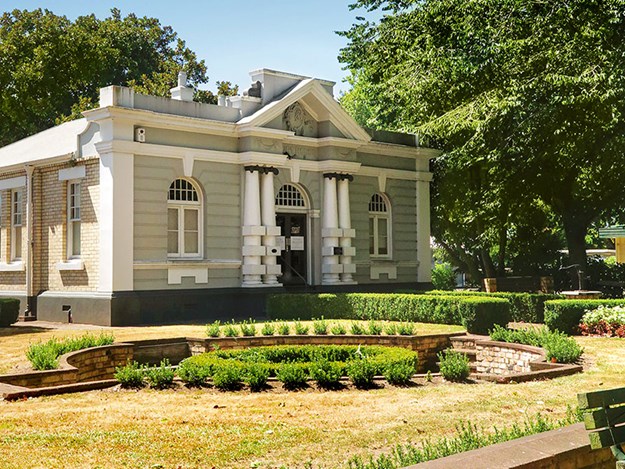 |
Cambridge Museum |
Cambridge Museum
The Cambridge museum is small but perfectly formed. Located in one of the towns prettiest buildings, the two-room exhibitions focus on “bonding people and place” via a series of interesting displays. There’s an interactive switchboard to play with, tales of “furious riding and larrikinism” from the courthouse and the history of the Cambridge Camera Clubs. It’s full of charm and free of charge (donations appreciated, of course).
24 Victoria Street, Cambridge
(07) 827 3319. cambridgemuseum.org.nz
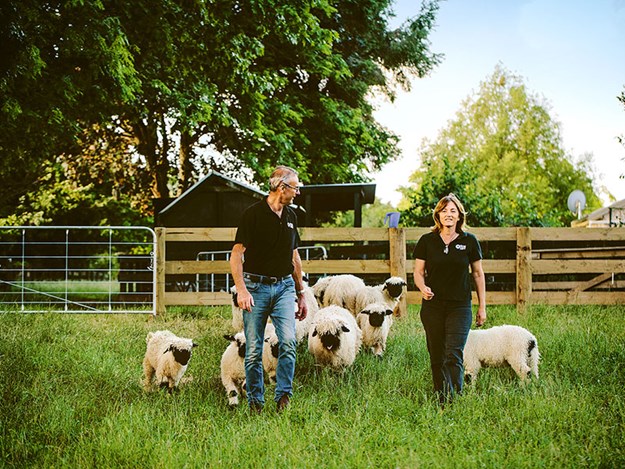 |
Rose Creek Sheep Tours |
Rose Creek Sheep Tours
They’ve been called the ‘cutest sheep in the world’ and how could anyone disagree? With black faces and ears, long fluffy coats and wonky horns, the Walliser Schwarznasenschaf or Valais Blacknose sheep are a children’s soft toy come to life.
Leigh-Anne and Andrew Peake have come a long way in a few years – as have their sheep. Their flocks began life as embryos created on the opposite side of the world, and after navigating a fair amount of red tape, they were able to import the would-be sheep and begin the breeding process. The first lambs arrived in mid-2018, and their flock has increased so much that they now offer sheep tours and are embarking on a natural breeding programme.
Leigh-Anne and Andrew began offering farm tours after their sheep stole Santa’s thunder at the local Christmas parade. Rather than risk ending up on the naughty list, they decided to share their sheep with the public year-round. The tour takes about an hour, and visitors can cuddle the sheep to their heart's content. “These are basically the opposite of what sheep are meant to be,” says Leigh-Anne. “They’re smoochy and come up for a nibble and rub as soon as they see you. They’re the friendliest sheep imaginable”. Once they’re snuggled out, guests can feed the two Gypsy Vanner horses a carrot or two, or in the spring, bottle feed one of the lambs.
Tours are by appointment and generally after 3pm and can be booked via the Cambridge iSite.
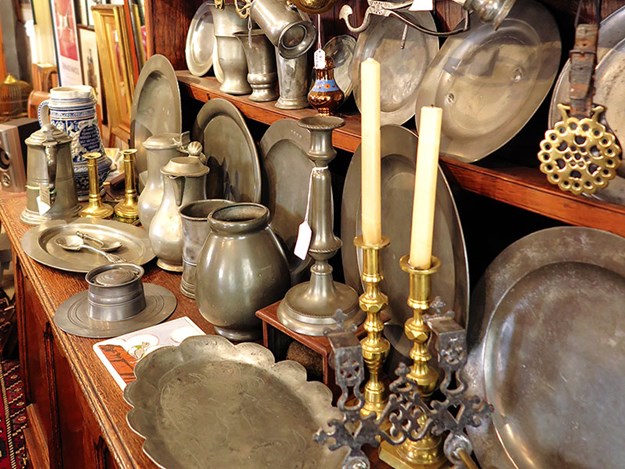 |
Alys Antiques |
Alys Antiques
A selection of English, continental and Asian antiques from the 17th to 20th centuries may be the drawcard, but owner Jutta Mark is the unexpected delight of Alys Antiques. Having worked within the 50-year-old business since 1991 and owning it since 2007, Jutta is the master of this realm. Master literally – she recently received her Masters in Art from the University of Waikato, thanks to her thesis on cabaret in Berlin between 1900 and 1945 – written entirely in German. She began her career in her native Germany working in Berlin’s Nierendorf Gallery, before moving to Cambridge and working as a hypnotherapist. Antiques and art remain her passion – look for the range of pewter tankards and dinnerware.
87A Victoria Street, Cambridge
(07) 827 6074, alysantiques.co.nz
Antiques on Victoria
If Irishman Patrick Delany isn’t to be found behind the counter of Antiques on Victoria, there’s a good chance he’s on the hunt for wares in his European homeland. Antiques on Victoria specialises in large furniture items from the 18th to mid-20th century, and also offers an eclectic mix of art, jewellery, homewares and crystal. Some items may stump customers, including one wooden piece that’s caused many a furrowed brow. Guesses include a feeding trough, sled and a rather uncomfortable baby bath. The truth? Well, they may hope to make some ‘dough’ from it…
65 Victoria Street, Cambridge
021 244 4292, antiquesonvictoria.com
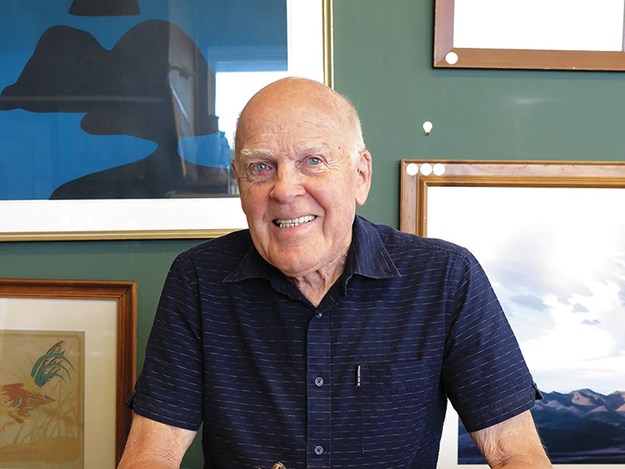 |
Colonial Heritage Antiques |
Colonial Heritage Antiques
Ken Sheldrick is a man of many passions. While he is expert in rare books – with a varied collection rich in military history – Ken’s Cambridge store also has one of the largest collections of antique jewellery in New Zealand, with pieces dating back to the Georgian period (1714-1837). Colonial Heritage Antiques is a collector’s dream, with thousands of items tucked away in nooks and crannies and showcased in glass cabinetry. Ken is the keeper of their stories; he’s been behind the counter for 45 years. A former history teacher, Ken trained in London, shifted to Australia, then moved to Cambridge for love. While he admits the boom of antiques has faded, the demand for antique jewellery and books remains high – while Kindles may be easy, it turns out nothing beats the smell and feel of an old book.
Corner Empire and Duke Street, Cambridge. (07) 827 4211, colonialheritage.co.nz
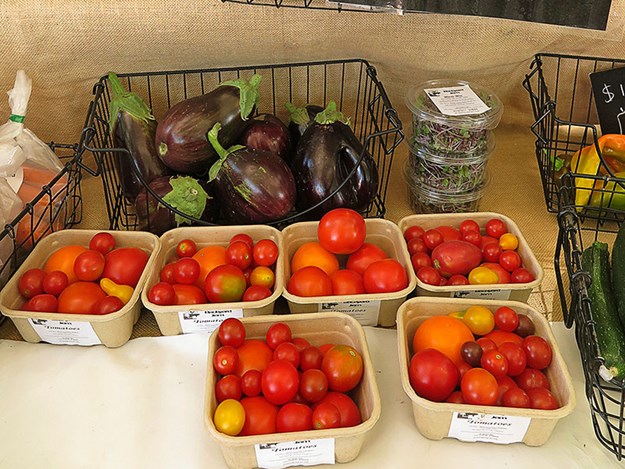 |
Cambridge Farmer's Market |
The Cambridge Farmer's Market
It’s hard to miss the Cambridge Farmers’ Market; simply follow the reusable shopping bag-carrying crowds to Victoria Square in the heart of town. For shoppers who love local, farmers’ markets have become an essential part of the weekend routine, it’s part grocery shop, part social event. The Cambridge Market has been operating since 2010, and runs year-round, every Saturday from 8am to noon. There’s an ever-changing rainbow of local produce available, and a few treats to tempt (join the line for the doughnuts).
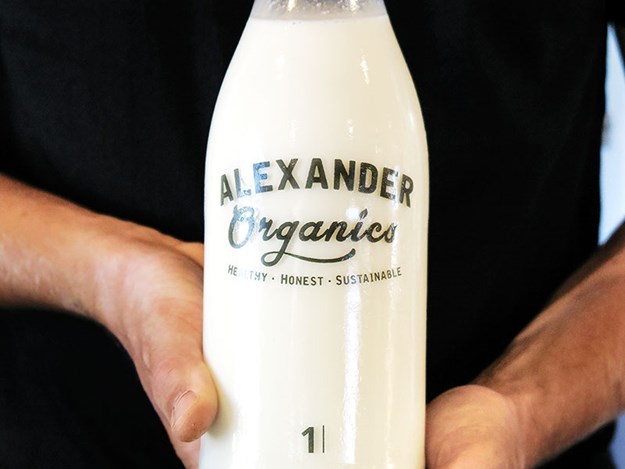 |
Alexander Organics |
Alexander Organics
There is no truer, fresher taste of the Waikato than that found in a glass of Alexander Organics milk. Jesiah and Ellen Alexander lease their 45ha Cambridge patch from her grandfather's farm and have established a herd of 115 dairy shorthorns and Ayrshire cattle, 15 of which produce pure raw milk for their on-site vending machines. “The milk is fresh every single day, and is wholesome and unprocessed”, says Ellen. “Every precaution is taken to ensure we’re supplying clean and healthy milk; each cow has her individual teats hand washed, fore milk stripped and inspected for quality, sterilised with an iodine sanitiser, and then dried with a single-use paper towel”. The young couple, who met during a defensive driving course, have big plans for their on-site store. In addition to their self-serve milk vending machines, they also sell free-range eggs from their growing flock, and have recently planted an orchard. Everything on site is certified organic – including their home, which is no mean feat.
Alexander Organics milk is currently only available on site. It’s BYO container or bottle for the vending machines, with reusable glass bottles for purchase.
133 Flume Road, Cambridge
027 517 1060, alexanderorganics.co.nz
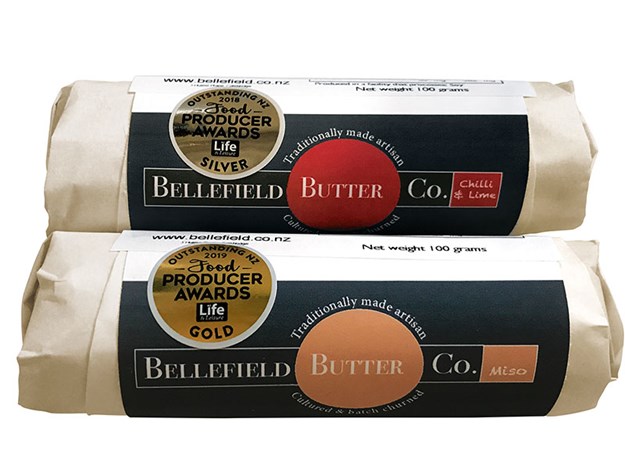 |
Bellefield Butter |
Bellefield Butter
While cultured butter may sound like butter with discerning taste in opera, the truth is far more delicious (and less silly). Jan and Steve Dolan have been crafting butter in a shipping container next to their home for almost two years. The ex-Liverpudlians had been dabbling in traditional butter making, just like Steve remembers from childhood, when their dream was given a nudge in the right direction by being made redundant within days of each other. Instead of starting the job hunt, they decided to was time to take their love of cultured butter to the market. “This is butter made differently – we used pasteurised cream but then reintroduce a lactic culture. After fermenting for 24 hours, ripening for a week then churned, Steve then handworks the butter.” The result is a smooth, rich, gold butter that shares only a name with the supermarket alternative.
Their success has been quick – the Bellefield Chilli and Lime Butter won a silver award at the 2018 Outstanding Food Producer Awards, and both their butter and buttermilk have become popular with local restaurants. Find them at the Cambridge Farmers Market on Saturday morning and the Hamilton market on Sunday.
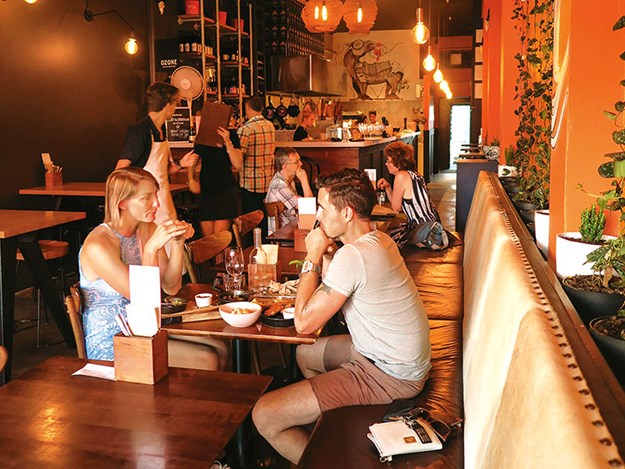 |
Pony |
Pony
Pony is a place for sharing – sharing food, sharing a bottle of wine and sharing stories. The Cambridge restaurant opened in 2017 and has become the go-to for date nights and after-work catch ups. The lively, bright space tempts diners in for a quick glass of wine and keeps them captive with delicious small plates bursting with an international flair. The Chef conjures sophisticated flavours combinations in a variety of Spanish tapas-style plates and raciones. The difference? Tapas are traditionally snack plates, while raciones are designed to, well, share. Good luck keeping any plate exclusive though, sneaking a bite is far too tempting. Try the PFC (Pony Fried Chicken).
55 Duke Street, Cambridge
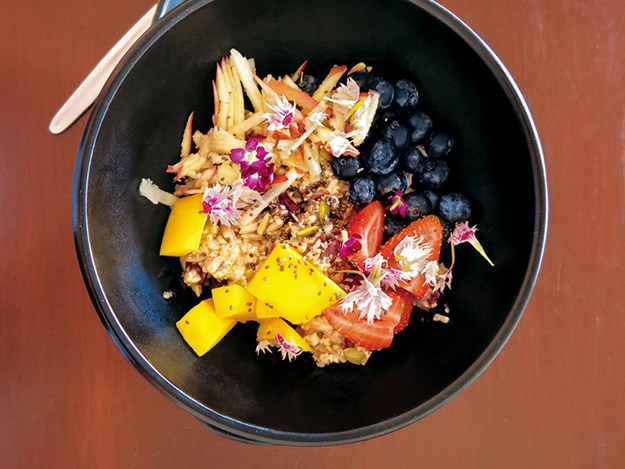 |
Paddock |
Paddock
Lisa Allen originally planned for Paddock to be a takeaway joint, but one look at the crowded indoor space and tables of diners scattered across the footpath and it’s clear that something went happily wrong. This busy local favourite is the place to go for loaded bagels, bulging burgers and all-day breakfasts of all persuasions – porridge for the pious and buttermilk waffles for the easily tempted.
There is a takeaway window for coffee lovers on the move (Supreme coffee too), and they also have the obligatory green smoothie – just the thing to wash down a still-warm cronut. Like the name suggests, everything here is as fresh and local as possible, made with organic fruit and vegetables and free-range meat. Open for breakfast and lunch.
46 Victoria Street, Cambridge
(07) 827 4232, paddockcambridge.co.nz
Little Waipa Reserve
Located off Horahora Road and on the path of the Waikato River Trail is Little Waipa Reserve. The large reserve is located right on the river's edge, with access for kayaks, boaties and fishermen. Camping and campervans are welcome here – there are decent facilities including toilets and barbecues. Contained campers can park for two nights free of charge, but those in tents and freedom camping must obtain a permit from the South Waikato Council. Permits are free of charge and application is easy via their website.
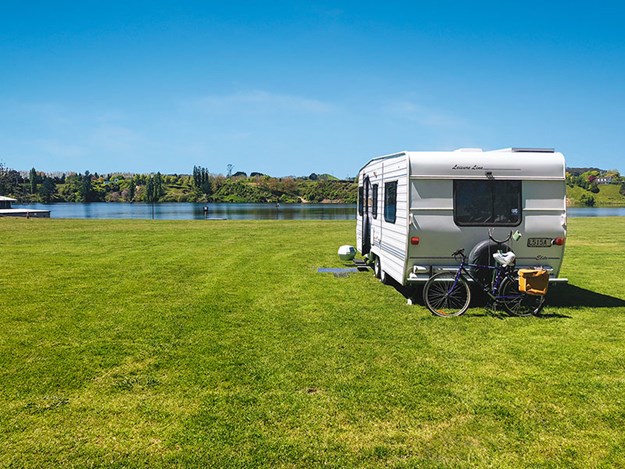 |
Mighty River Domain |
Mighty River Domain, Lake Karapiro
Park up the campervan, pull out a deck chair and enjoy the free entertainment at the Mighty River Domain. Located on the edge of Lake Karapiro, this multifaceted accommodation site has prime views of all of the watersports and activities that take place on the water. The campground has 140 sites, which can be hired individually or as blocks. There are a number of chalets that sleep four in bunk beds or, for the rather large group, the Rob Waddell Lodge sleeps 41 people.
It pays to check the events schedule before booking, as many weekends see large groups and activities setting up camp. In late March 10,000 spectators and 2000 rowers descend on the lake for the Aon Maadi Cup, the National Championships for school rowing – plan accordingly.
601 Maungatautari Road, Leamington
(07) 827 4178, lakekarapiro.co.nz
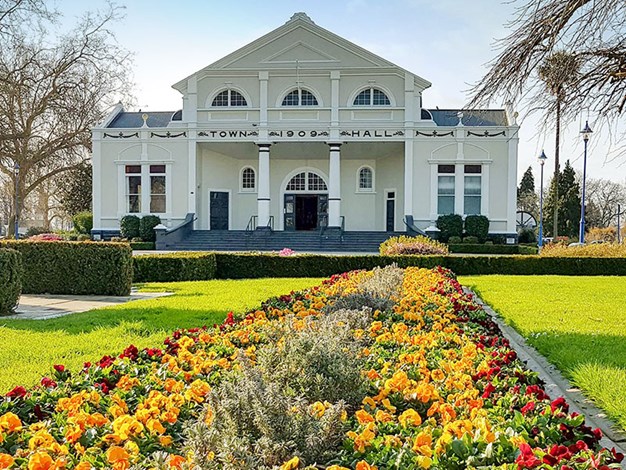 |
Cambridge Town Hall |
Extracted from the 2020 issue of The Insider’s Guide to New Zealand, New Zealand’s leading independently researched travel guide. To order your copy, visit thisnzlife.co.nz/shop $19.90 plus handling and postage.





